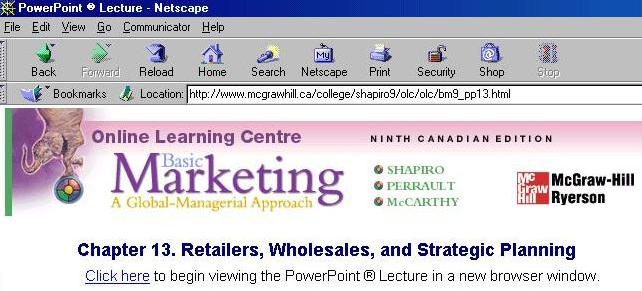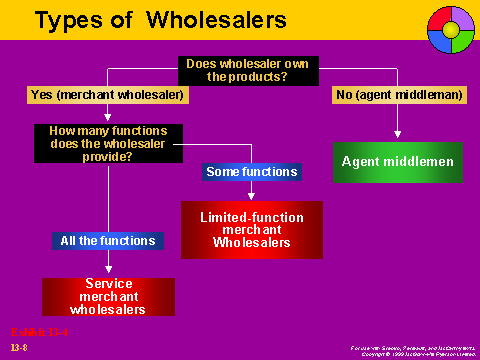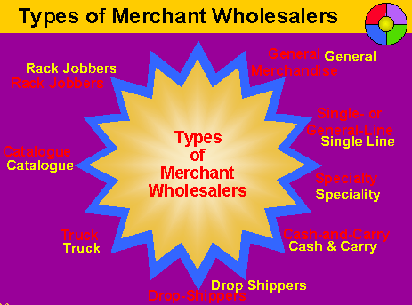 |
|
|
|
|||||
|
Chpt 13
 |
Retailers, Wholesalers -
Strategic Planning
On page 332
|
|
Strategy
Strategy
Strategy
Strategy |
Components of a good strategy First, understand how Strategy fits into the overall corporate planning framework
see also http://www.occc.com/marketing/m-4.htm the following explanations on GOPST comes partly from www.occc.com/marketing/m-4.htm and partly from WTGR Goals--
Goals are the ultimate thing you want to achieve. They are the statements
that a company uses to motivate employees and statements used to judge
and measure challenges that you face. Excellently worded goals should include
measurable statements.
Examples:
. Examples:
(theoretically if you have the largest product offering, you have the potential to make the largest sales, which helps fulfill the goal) Plans can include such concepts as
Examples:
SWOT is an acronym that stands for
(SWOT is explained in the text in Chpt 7, page 188-189) Examples:
|
Chpt 13

Retailers Wholesalers Strategic Planning |

students in MRK 200 should look at the powerpoints online because this will give them an idea of the important themes in the chapter |
Chpt 13
 |
On page 332
"The Nature of Retailing" "Retailing covers all of
the activities involved in selling goods and services to consumers for
nonbusiness use"
"Retailing involves many small transactions" "Retailing is very competitive"
"Retailers must deal with the producer, and consumer"
|
Chpt 13
 |
On page 333
"The Retailer as a Distributor of Goods"
|
Chpt 13
 |
On page 339
"The Retailer as a Strategic Manager"
|
|
Interdisciplinary nature of e-Commerce Benefits
Benefits
Limitations
Interdisciplinary
Benefits
Benefits
Limitations
|
Interdisciplinary nature
of e-Commerce (e-Business)
|
| Advantages
and Disadvantages of Electronic Commerce Advantages
|
Advantages of Electronic
Commerce
|
Chpt 13
 |
On page 341
"Target Marketing is the Key" 
The question about a lingerie store depends on the demographic info you have and the 5 environments "Consumers have emotional
and social motives"
|
Chpt 13
 |
On page 341

|
Chpt 13
 |
On page 343
"Retailers must be good Managers
of people"
which depends on informed friendly people with NO attitude |
Chpt 13
 |
On page 344
"Strong Financial Management
Skills Required"
 |
.
Chpt 13

Retailers Wholesalers Strategic Planning |
 |
Chpt 13

Retailers Wholesalers Strategic Planning |
 |
Chpt 13

Retailers Wholesalers Strategic Planning |
Types of Agent Middlemen
|
|
|
CONTACT IMAIN PAGE I NEWS GALLERY I E-BIZ SHORTCUTS I INT'L BIZ SHORTCUTS I MKTG&BUSINESS SHORTCUTS I TEACHING SCHEDULE |
| . | |
| MISTAKES I TEXTS USED I IMAGES I RANK I FORMER STUDENTS I | |
| . |